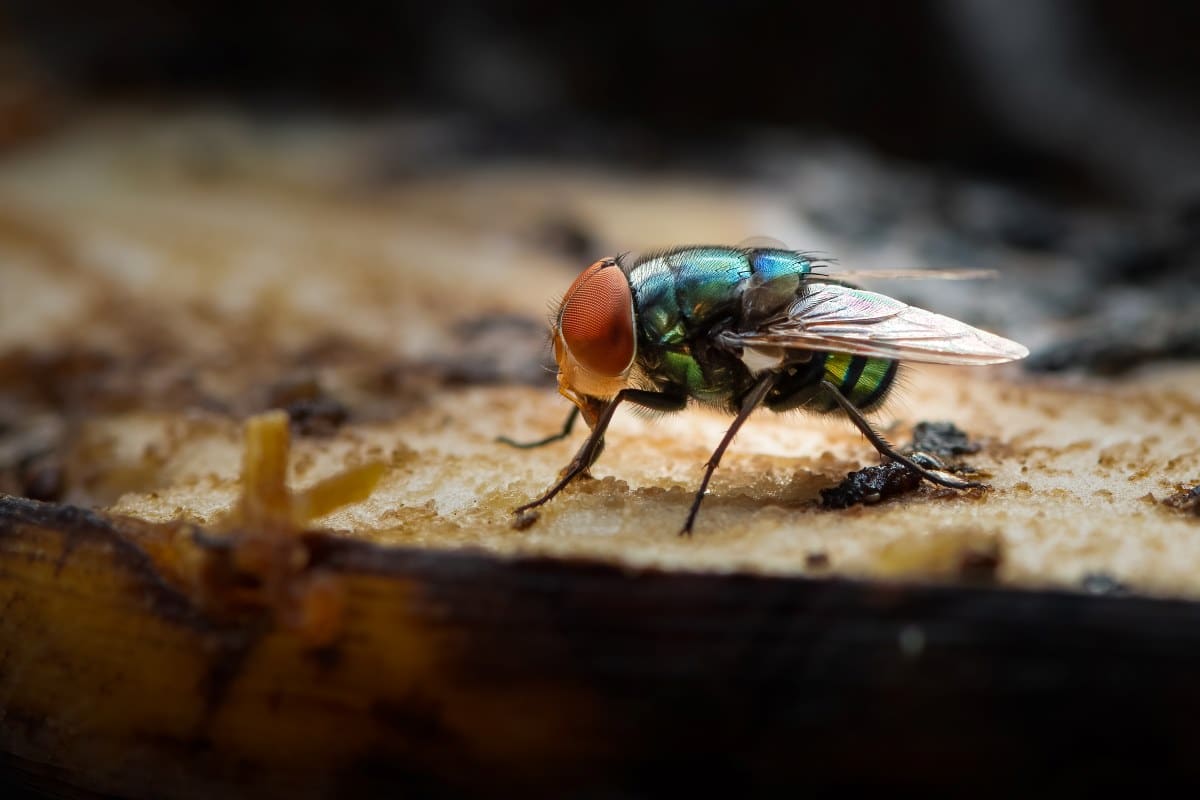
Facts About Flies
Flies are more than just pesky intruders; they play intriguing roles in our environment and exhibit fascinating behaviors. In this blog, we’ll explore various fly species, their lifecycles, and their ecological and pest control significance here in South Florida. Whether you’re curious about their habits or looking for ways to manage them and keep them away from your home or business, Hulett Environmental Services is here to help.
Different Fly Species: An Overview
Biting Flies
Flies come in many shapes and sizes, each with unique characteristics and behaviors. Among the diverse types, mosquitoes, no-see-ums, and fungus gnats are commonly encountered in Florida. Mosquitoes, known for their irritating bites and potential to transmit diseases, breed in stagnant water and pose significant health risks. No-see-ums, or biting midges, also bite, but are tiny, biting flies that are often barely visible but notorious for their uncomfortable bites. Fungus gnats do not bite, but still make the list because they look like small mosquitoes. These delicate flies are typically found in damp indoor environments where they feed on fungi and organic matter in the soil.
Small Flies
If you see flies circling your kitchen or bath, it is likely fruit flies, drain flies, or phorid flies, which are frequently found in and around homes. Fruit flies are small and attracted to ripe or fermenting fruit, making them a nuisance in kitchens and food storage areas. Drain flies, also known as sink flies, are small and hairy, often breeding in organic matter within plumbing systems. Phorid flies, which are often mistaken for fruit flies, are small and humpbacked, found in decaying organic matter and difficult to control due to their ability to breed in various sources, such as drainage lines and drip pans.
Large Flies
On the other hand, if you see large flies within your home, you are likely dealing with house flies, blow flies, or flesh flies, which are also common pests with distinct behaviors. House flies are attracted to food waste and organic matter, reproducing quickly in favorable conditions and potentially spreading diseases. Blow flies, recognizable by their metallic blue or green bodies, are often seen around decaying flesh and play a role in forensic studies due to their predictable presence on carrion. Flesh flies, larger than house flies, prefer decaying flesh and are significant scavengers. Their larvae feed on carrion, making them a concern for hygiene and pest control as indicators of an underlying rodent infestation.
Interesting Facts About Flies in Florida
Florida’s warm climate makes it an ideal habitat for various fly species. The state’s conditions allow for rapid reproduction and year-round activity for many flies. Species such as mosquitoes and no-see-ums are especially prevalent and can cause significant discomfort and health risks to residents.
Do Flies Sleep? Understanding Fly Behavior
Flies do sleep, though their sleep patterns are quite different from those of humans. They typically rest during the night or when environmental conditions are unfavorable. Flies enter a state of rest where their activity slows down significantly, conserving energy for their active periods.
Fun Facts About Flies and Their Ecological Roles
Flies play crucial roles in the ecosystem. Many flies, such as hoverflies, are important pollinators for plants, helping in the fertilization of flowers and contributing to plant reproduction. Others, like blow flies and flesh flies, aid in the decomposition process by breaking down dead organisms and recycling nutrients back into the ecosystem. Additionally, flies like blow flies and flesh flies are used in forensic entomology to estimate the time of death in criminal investigations due to their predictable lifecycle stages.
The Surprising Lifecycles of Various Fly Species
Flies exhibit diverse lifecycles, often including several stages: egg, larva (maggot), pupa, and adult. For instance, house flies can complete their lifecycle in as little as a week, while flesh flies may take a bit longer, depending on environmental conditions. Understanding these lifecycles helps in effective pest management and control.
Contact Hulett Environmental Services for Professional Fly Control in South Florida!
If you’re dealing with a fly infestation or want to prevent one, Hulett Environmental Services offers expert solutions. Our team can identify the fly species, assess your situation, and provide a tailored pest control plan to keep your home fly-free. Contact us today for professional fly control near you and enjoy a pest-free environment.



